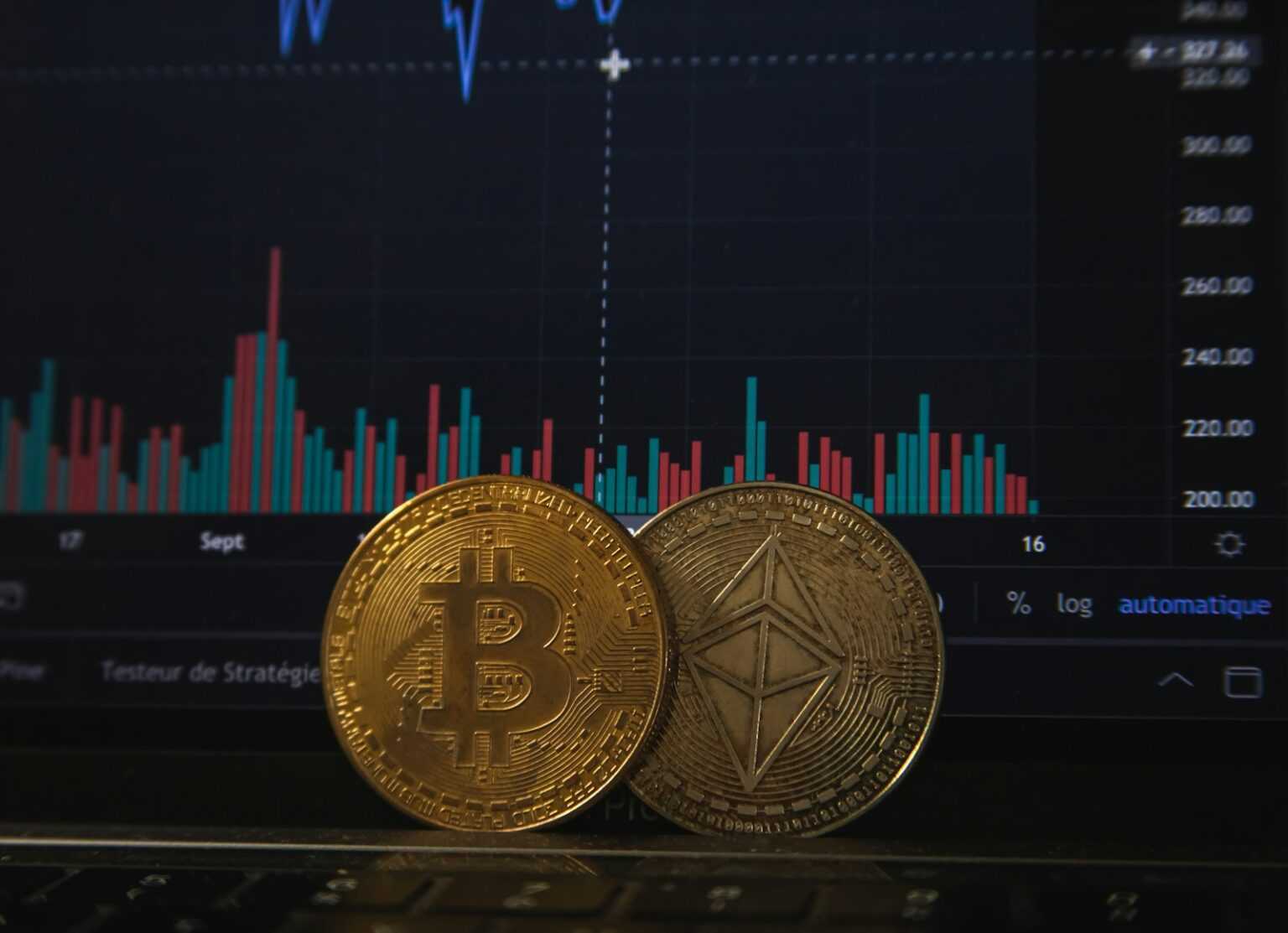Integrating decentralized ledgers with immersive environments offers a novel framework for constructing secure, user-driven platforms. By combining VR interfaces with cryptographically secured networks, participants gain control over their assets and identities within interactive domains that simulate tangible presence. This synergy enables transparent transactions and verifiable ownership of in-world items, fostering trust without centralized oversight.
Designing such interconnected frameworks requires careful consideration of consensus mechanisms adapted to the latency demands of three-dimensional simulations. Experimental setups demonstrate that hybrid protocols balancing speed and security can sustain persistent worlds where users engage through avatars while maintaining cryptographic proof of interactions. This approach encourages collaborative economies built on tokenized resources and programmable contracts executed seamlessly in real time.
The fusion of spatial computing with distributed databases invites researchers to examine how data immutability enhances narrative continuity across sessions and devices. Practical investigations reveal methods to anchor virtual artifacts permanently, ensuring provenance tracking even when environments evolve dynamically. These results suggest pathways toward scalable architectures supporting multi-tenant realms with customizable governance models, empowering creators and consumers alike.
Virtual reality: VR blockchain ecosystems
Integrating decentralized ledger technologies with immersive simulation platforms enhances user autonomy and economic participation within these interactive environments. The fusion enables secure asset ownership, transparent transactions, and programmable smart contracts that govern exchanges of virtual goods and services. This combination supports a self-sustaining economy where participants can monetize creativity, trade rare items, and access exclusive content without reliance on centralized authorities.
Technical architectures often employ distributed consensus mechanisms paired with cryptographic proofs to maintain integrity across nodes managing avatars, objects, and event histories. Such frameworks ensure persistent state synchronization while preventing fraudulent manipulation of scarce digital assets. For example, non-fungible tokens (NFTs) represent unique elements–land parcels or artwork–that retain provenance and scarcity through immutable records.
Immersive interaction models powered by decentralized ledgers
The experiential quality depends heavily on latency optimization and data throughput between client devices and peer nodes sustaining the platform’s shared environment. Layer-2 scaling solutions like rollups or sidechains mitigate bottlenecks inherent in base-layer protocols, facilitating real-time responsiveness essential for seamless engagement. Experimental deployments demonstrate that integrating sharding techniques distributes processing loads effectively, enhancing concurrent user capacity without sacrificing security guarantees.
Economic incentives embedded within these frameworks reward contributors who provide computational resources or curate content. Tokenomics design plays a pivotal role in aligning stakeholder motivations by issuing native utility tokens convertible into services or governance rights. For instance, users who develop highly sought-after avatars or host popular events receive compensation proportional to demand metrics recorded transparently on-chain.
- Decentralized identity management preserves privacy while enabling reputation systems critical for trust establishment.
- Interoperability standards facilitate asset portability between diverse immersive domains expanding user choice.
- Programmable logic allows dynamic environmental modifications responding to collective decisions encoded via smart contracts.
The convergence of cryptoeconomic principles with spatial computing introduces novel experimental methodologies to measure user engagement quantitatively. Data analytics derived from transaction flows combined with behavioral telemetry reveal patterns influencing ecosystem evolution. This feedback loop informs iterative protocol refinements aimed at maximizing inclusivity and minimizing entry barriers for creators and consumers alike.
In summary, exploring this intersection through systematic trials advances understanding of how decentralized infrastructures underpin sustainable virtual marketplaces. Researchers are encouraged to replicate variable conditions such as network load scenarios or incentive model adjustments to evaluate performance impacts empirically. Such inquiry not only enriches theoretical foundations but also accelerates practical adoption pathways fostering resilient immersive communities worldwide.
Integrating VR with Blockchain
Combining immersive simulation technologies with decentralized ledger frameworks enables creation of transparent, user-driven digital marketplaces where asset ownership and transaction histories remain immutable. This integration fosters a robust environment supporting programmable interactions and verifiable scarcity within virtual spaces. For example, non-fungible tokens (NFTs) offer proof of authenticity for in-world items, promoting secure trade and persistent value exchange.
The fusion enhances interactive experiences by embedding cryptographic trust into content provenance and user identity management. Developers can construct interoperable networks that record every interaction on distributed ledgers, ensuring traceability without centralized gatekeepers. Projects like Decentraland demonstrate how shared virtual environments can sustain an economy powered by tokenized assets, enabling users to monetize creations while retaining control over intellectual property.
Technical Approaches to Secure Asset Management
Implementing smart contracts governs digital goods lifecycle through predefined protocols executed autonomously on consensus-based platforms. These scripts enforce rules such as transfer conditions, royalties distribution, or access permissions directly linked to 3D objects or avatars within the immersive space. Experimentation with Layer 2 scaling solutions improves throughput and reduces costs critical for real-time interaction demands typical in three-dimensional environments.
For instance, combining zero-knowledge proofs with off-chain computations allows validation of user actions without revealing sensitive data, maintaining privacy alongside accountability. This methodology supports complex scenarios like multiplayer gaming economies or collaborative design studios where participants negotiate resource sharing transparently but discreetly.
- Tokenization: Representing in-experience assets as unique cryptographic tokens establishes clear ownership rights.
- Decentralized Identity: Utilizing self-sovereign identity frameworks secures authentication without reliance on central authorities.
- Cross-platform Interoperability: Standardized protocols permit assets and credentials to move seamlessly across different virtual domains.
A systematic investigation into synchronization mechanisms reveals challenges related to latency and consensus finality when updating state changes visible across network nodes. Optimizing data propagation pipelines through hybrid architectures–where edge computing complements blockchain checkpoints–yields improved responsiveness essential for immersive applications requiring instantaneous feedback loops.
This multidisciplinary approach invites further exploration into integrating sensor data streams from head-mounted devices directly onto decentralized registries. How might continuous verification impact user-generated content curation or enhance reputation systems? Pursuing experimental frameworks that align hardware inputs with tamper-proof logs will expand understanding of trust dynamics in digitally mediated social constructs.
The convergence ultimately suggests a paradigm where immersive simulations evolve beyond passive consumption toward participatory economies sustained by transparent governance and programmable asset flows. Encouraging iterative prototyping combined with rigorous testing provides insights into scalability thresholds and security considerations necessary for widespread adoption within these interconnected platforms.
Tokenization in Virtual Worlds
Implementing tokenization within immersive environments fundamentally transforms user interaction by enabling secure ownership and transfer of digital assets. In VR platforms, tokenized items–ranging from virtual land parcels to unique wearables–are registered on distributed ledgers, ensuring provenance and scarcity. For instance, projects like Decentraland utilize non-fungible tokens (NFTs) to represent parcels of virtual terrain, allowing participants to buy, sell, or develop properties with immutable proof of ownership. This mechanism enriches the economy embedded in simulated spaces by introducing verifiable asset liquidity and programmable contracts.
The integration of token standards compatible with immersive experiences facilitates interoperability across multiple platforms. The ERC-721 and ERC-1155 protocols serve as technical foundations for issuing unique or semi-fungible tokens that reflect virtual goods’ characteristics. Experimental deployments demonstrate how these standards enable creators to monetize content seamlessly while granting users authentic possession rights beyond mere usage licenses. Furthermore, the incorporation of decentralized exchanges within these ecosystems supports dynamic price discovery and peer-to-peer trading without centralized intermediaries.
Technical Insights into Asset Tokenization
Tokenization leverages cryptographic proofs embedded in smart contracts to automate transactions and enforce ownership rules transparently. By storing asset metadata off-chain while maintaining critical identifiers on a distributed ledger, systems optimize for scalability without sacrificing security. Experimental setups show that combining IPFS or similar decentralized storage solutions with ledger references allows efficient management of high-volume multimedia content typical for immersive environments. These architectures also facilitate composability where multiple tokens can represent modular components of a single complex asset.
Explorations into economic models emphasize how programmable tokens influence user incentives within synthetic realms. Token-based reward schemes encourage active participation in content creation, curation, and governance activities shaping the ecosystem’s evolution. Simulations reveal that economies anchored by tokenized assets can achieve self-sustaining growth through mechanisms such as staking rewards and automated royalties embedded directly into the codebase of each item. Such innovations provoke further inquiry into balancing decentralization benefits against transaction throughput limitations inherent in current consensus algorithms.
Decentralized Ownership Models
Implementing decentralized ownership frameworks within immersive environments transforms how users control and monetize digital assets. Distributed ledger technologies ensure transparent provenance, enabling users to verify authenticity and transfer rights without intermediaries. Such models foster true asset scarcity and empower participants to engage in a peer-to-peer economy, reshaping the structure of interactive experiences.
Examining tokenization mechanisms reveals that non-fungible tokens (NFTs) serve as unique identifiers for virtual objects, granting exclusive ownership recorded immutably on a distributed network. This approach contrasts with centralized databases by eliminating single points of failure and censorship risks. For instance, platforms like Decentraland utilize these principles to allow users to buy, sell, and develop parcels of immersive land within their ecosystems.
Technical Foundations and Practical Implementations
A thorough understanding of smart contract functionality is pivotal when constructing decentralized property systems. Smart contracts automate transactions based on predefined rules encoded onto programmable ledgers, ensuring trustless execution of ownership transfers or rental agreements. Ethereum’s ERC-721 standard exemplifies this by defining interoperable NFT protocols that maintain asset uniqueness across various marketplaces.
Experimental case studies highlight the integration of tokenized assets into multisensory environments where user interaction affects value dynamics. Projects such as Somnium Space incorporate real-time rendering engines with blockchain-based registries to enable seamless asset interoperability across different immersive applications. These experiments invite researchers to investigate latency optimization and consensus algorithm improvements for enhanced user experience fidelity.
- Ownership Verification: Cryptographic proofs validate possession without revealing sensitive data, preserving privacy while confirming legitimacy.
- Asset Portability: Decentralized ledgers facilitate cross-platform transfers, allowing asset holders to maintain control beyond singular applications.
- Ecosystem Incentives: Token economies reward contribution through staking or governance participation, sustaining platform growth organically.
The economic implications extend beyond simple trade; fractional ownership models enable collective investment in high-value items by subdividing tokens proportionally among stakeholders. This fractionalization introduces liquidity options previously unavailable in conventional asset management, encouraging diversified portfolios within immersive domains. Investigations into regulatory compliance and secure custody solutions remain critical for mainstream adoption.
Pursuing deeper experimentation includes analyzing consensus protocols’ impact on transaction finality times and cost-efficiency during peak demand periods in immersive markets. Furthermore, assessing user behavioral patterns when interacting with programmable property rights may reveal novel incentive structures enhancing ecosystem sustainability. Encouraging systematic trials will advance comprehension of how decentralized ownership reshapes economic interactions in simulated worlds accessible via head-mounted displays or mixed-reality interfaces.
Smart Contracts for VR Assets
Implementing smart contracts to manage assets within immersive environments enhances transactional transparency and automation. These self-executing protocols ensure that ownership, transfer, and usage rights of digital items are enforced without intermediaries, creating a trustless environment critical for sustaining a robust virtual economy. For instance, the use of programmable agreements can guarantee that when a user purchases an avatar skin or virtual land parcel, the transfer occurs instantly and is verifiable by all participants in the network.
By integrating these scripts into interactive experiences, creators can embed complex conditions governing asset utilization. This includes royalties for secondary sales or conditional access based on user achievements within the simulated space. Such mechanisms expand economic models beyond simple buy-sell transactions to encompass dynamic licensing and revenue-sharing frameworks, essential for maintaining active participation and content creation incentives.
Technical Foundations and Practical Implementations
The core function of these automated contracts lies in their deployment on decentralized ledgers that provide immutability and consensus-driven validation. Each contract operates under predefined logic written in domain-specific languages like Solidity or Rust, depending on the underlying chain technology. A notable case study involves a leading platform where digital collectible items are tokenized via non-fungible tokens (NFTs) integrated with smart contracts enforcing provenance and uniqueness–attributes vital for authenticating scarce virtual goods.
Experimentation with modular contract design reveals pathways to optimize gas consumption while preserving security guarantees. Developers might explore layered state channels or sidechain solutions to mitigate latency challenges inherent in executing complex asset exchanges during real-time immersive sessions. Testing these configurations under controlled conditions affords insights into balancing performance demands against decentralization principles.
Examining ecosystem-wide interactions uncovers how interoperable standards facilitate cross-platform asset mobility, enhancing user experience by allowing purchased items to retain value across multiple simulated worlds. The introduction of composable contracts enables bundling diverse asset types–avatars, wearables, tools–into unified ownership packages governed by multi-signature rules or time-locked release schedules. This composability enriches economic flexibility and supports novel monetization schemes aligned with evolving consumer behavior patterns within simulated environments.
Interoperability Challenges in VR: A Technical Conclusion
Addressing interoperability within immersive environments requires a unified protocol framework that facilitates seamless asset transfer and consistent experience rendering across diverse platforms. The integration of decentralized ledgers enhances trustless exchange mechanisms, yet current disparities in data standards and consensus models impede fluid cross-application interactions.
The complexity of synchronizing stateful interactions among heterogeneous nodes underscores the necessity for modular middleware layers capable of abstracting underlying infrastructure differences. Experimental implementations demonstrate that leveraging cryptographic token standards aligned with spatial metadata schemas can significantly reduce latency and data fragmentation, advancing coherent user engagement within interconnected realms.
Key Insights and Forward-Looking Perspectives
- Experience Continuity: Persistent identity management anchored by distributed registries enables users to maintain provenance and reputation across multiple immersive domains without sacrificing privacy or security.
- Economic Interoperability: Cross-chain asset bridges facilitate fungible and non-fungible token liquidity, catalyzing an integrated economy where virtual goods retain value regardless of environment boundaries.
- Technical Standardization: Adoption of interoperable smart contract interfaces paired with universal scene description formats supports dynamic content portability, reducing developer overhead while enhancing end-user immersion.
- Latency Optimization: Edge computing combined with on-chain verification protocols presents a promising approach to minimize synchronization delays critical for real-time interactive experiences.
The trajectory toward a cohesive metaverse hinges on iterative experimentation with hybrid consensus algorithms and adaptive encryption techniques that secure transactional integrity without compromising scalability. Encouraging open-source collaboration on modular frameworks will accelerate the convergence of disparate ecosystems into a robust networked fabric, enriching the digital milieu with persistent, transferable assets and shared states.
This evolving paradigm invites further inquiry into scalable state channels and zero-knowledge proofs as mechanisms to reconcile throughput demands with user-centric privacy controls. By systematically probing these avenues, researchers and practitioners can architect resilient infrastructures empowering truly immersive, interconnected experiences–laying the groundwork for a sustainable digital economy that transcends isolated instances of simulated existence.








